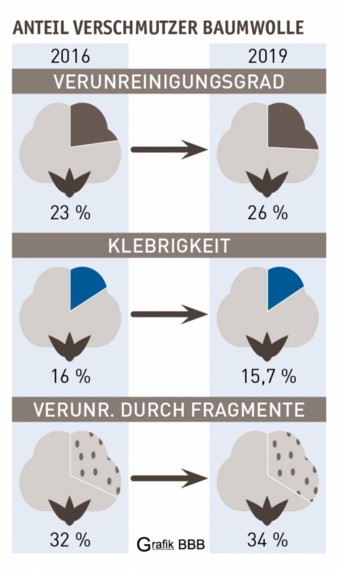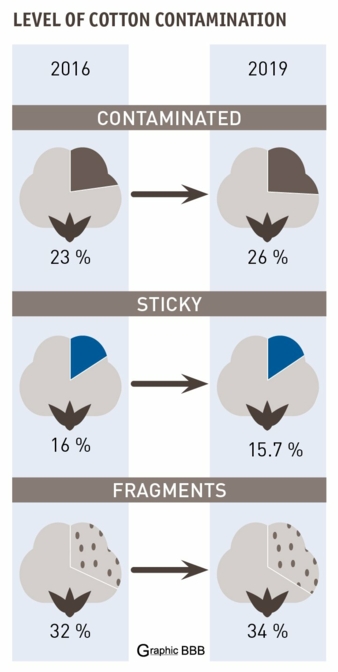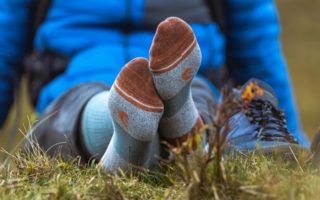16/06/2020 – ITMF survey 2019 — auf Deutsch lesen
Cotton contamination level up
The level of cottons moderately or seriously contaminated as perceived by the spinning mills from around the world grew from 23 percent in 2016 to 26 percent in 2019.
The most contaminated cotton descriptions considered for the survey originated in India, Pakistan, Tajikistan and Mozambique. In contrast, very clean raw cottons were produced in Australia, the USA, Argentina, Brazil and Spain.
The presence of sticky cotton as perceived by the spinning mills is close to constant – i.e. 16 percent in 2016 vs. 15.7 percent in 2019 – and remains at the lowest level since 1989. Descriptions that were affected most by stickiness were those from Sudan, the USA, Mexico and Turkey. On the other end of the range, cottons from South Africa, Tanzania, China, Mozambique, Chad, and Pakistan were not or hardly affected by stickiness.
34 percent of all cotton growths consumed contained moderate or significant amounts of seed-coat fragments, a slight increase since 2016 (32 percent).
Source: ITMF
Issue 21/22, Bremen Cotton Report





